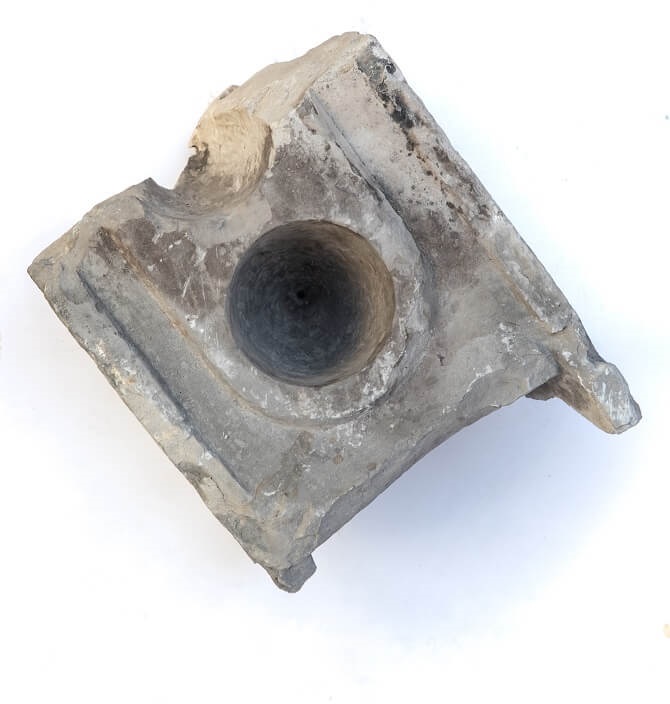The recent discovery of a rare 2000 year old object that was used to measure a uniform volume in excavations by the Antiquities Authority in the City of David in the National Park surrounding the walls of Jerusalem, strengthens the explanation that the lower city square of the city from the time of the Second Temple has been discovered.
It is essentially part of a stone table that was used to determine measurements of uniform volume, and was discovered near a large, paved square on the stepped street, which led pilgrims from the Pool of Siloam to the Temple Mount.
Prof. Roni Reich, who is performing research on the object says: “In the fragment of the measuring table discovered in the City of David, two of the deep conical sockets remain, with each socket having a small hole at the bottom. The hole at the bottom could be plugged with a finger, the pit then filled with some liquid. By removing the finger and emptying the material into another vessel, the volume of the vessel could be determined, according to the standard of the measuring table. In this way, merchants could come and calibrate their measuring instruments according to a uniform standard.”
Reich adds, “This is a rare tool. Other stone tools were very popular in Jerusalem at the time of the Second Temple, but so far, only two tools for measuring volumes have been discovered during excavations; one was discovered in the 1970s in excavations of the Jewish Quarter, and another tool was found in the excavations in Shuafat , which is north of Jerusalem”.
According to the archaeologist Ari Levy, one of the directors of the excavation in the Stepped Street from the Antiquities Authority, “In the excavations of the Stepped Street in the City of David, many stone weights have also been discovered, and these are of different values. The weights found mainly belong to a type that was typical of Jerusalem. The fact that there were weights typical of the city indicates the uniqueness of the economy and trade in Jerusalem at the time of the Second Temple, possibly influenced by the presence of the temple.” The stone weights are made like a flattened square, and are of different sizes, representing different weight measurements.
According to Reich, more than 90% of the stone weights of this type, which number several hundred in total, were found in archaeological excavations conducted on ancient Jerusalem at the time of the Second Temple: in this they are special, and represent something that is distinctly of Jerusalem.
In recent years, Antiquities Authority researchers Nachshon Zanton, Moran Hajabi and Meidad Shur, some of the directors of the excavation in the stepped street, have uncovered a large, paved square in the street that went up to the Temple during the time of the Second Temple, and they suggest that this square was used as the square for the lower city of Jerusalem, where trading activity took place.
According to Ari Levy, “The standard volume table we found and the stone weights that were discovered nearby strengthen the hypothesis that extensive commercial activity took place there, and perhaps it may also indicate the existence of a market.”
Prof. Reich adds that “it is possible that the office of the elected official in charge of the weights and measures of the city of Jerusalem was located in this area at the time of the Second Temple. This was a position that was common in other cities throughout the ancient Roman Empire, and which is known in Greek as Agoranomos”.




